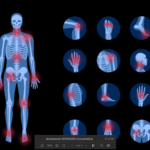John R. Stone, MD, PhD, of Creighton University, Omaha, Neb., focuses on the racial/ethnic disparities in mortality rates in a linked editorial.
“Extensive evidence shows that U.S. populations with social disadvantages who experience structural violence have worse health and less access to routine and high-quality health care, on average, than the white majority,” he writes.
“Social inequities also reduce health literacy, discourage people from seeking health care, and induce poor health-promotion habits. Given their much greater experience, on average, of these inequities, blacks and Hispanics with AAV will be diagnosed less often and treated accordingly. The same reasoning applies to American Indians, Alaska Natives, and others,” he adds.
“If undiagnosed, no specific treatment will be provided,” he said. “Thus, these groups probably die of vasculitides at greater rates than whites. Hence, reported AAV diagnosis and mortality rates by race/ethnicity are almost certainly not credible for populations experiencing social inequities.”
Duvuru Geetha, MD, of Johns Hopkins University, Baltimore, who studies AAV, tells Reuters Health by email, “There is room for further improvement of management of AAV patients with a goal to decrease mortality and morbidity while trying to avoid under-treatment or over-immunosuppression. Pitfalls of current treatment include delay in diagnosis, frequent relapses in certain subgroup of patients, unknown duration of maintenance immunosuppression and immunosuppression burden, high incidence of end stage renal disease (ESRD), and increased risk of cardiovascular disease.”
“There is a need for longitudinal studies in contemporary cohorts to evaluate the mortality benefits of modern therapies and trends in leading causes of death among AAV patients,” says Dr. Geetha, who was not involved in the study. “Factors associated with geographic differences in mortality should be explored.”
“Published studies demonstrate decreased adherence to safety standards for immunosuppressive drug dosing, monitoring, and use of prophylactic medications when caring for AAV patients,” Dr. Geetha said. “Opportunities to improve care, including compliance with safety standards for delivery of immunosuppressive medications, development of national treatment protocols to reduce heterogeneity in treatment, and increased vigilance for infection, remain a priority for management of AAV patients.”
“AAV patients should be followed at vasculitis centers and monitored closely for relapse, monitoring of side effects of immunosuppression, and cardiovascular risk factor reduction and malignancy surveillance,” he says.
Reference
- Steinberg AW, Wechsler ME, Fernández Pérez ER. Trends in antineutrophil cytoplasmic autoantibody-associated vasculitis-related mortality in the U.S., 1999 to 2017. Ann Intern Med. 2019 Oct 8. [Epub ahead of print]


